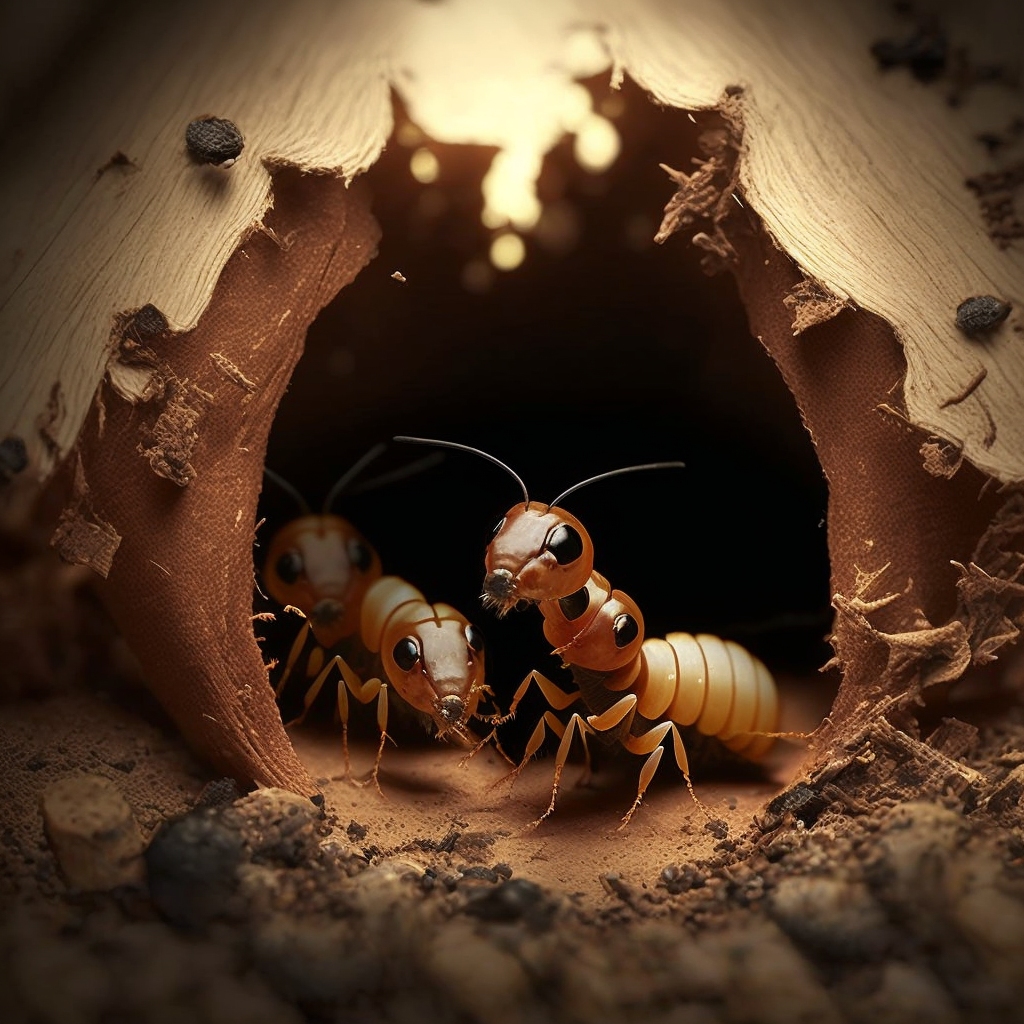Where do Termites Come From?
- The Origin of Termites
- The Evolution of Termites
- The Diversity of Termites
- Dampwood Termites
- Drywood Termites
- Subterranean Termites
- The Social Structure of Termites
- The Queen Termites
- The King Termites
- The Worker Termites
- The Soldier Termites
- The Swarmers
- The Diet of Termites
- The Impact of Termites
- The Control of Termites
- The Role of Termites in Culture
- The Study of Termites
- Conclusion
The Origin of Termites
Termites are a group of insects that belong to the order Isoptera. They are closely related to cockroaches and are sometimes referred to as “white ants.” Termites are found on every continent except Antarctica and are a vital part of many ecosystems around the world.
The Evolution of Termites
Termites are thought to have evolved from a group of cockroaches that lived in the early Cretaceous period, around 130 million years ago. Over time, these insects evolved to live in large, complex colonies and developed a highly specialized social system.
The Diversity of Termites
There are over 2,600 known species of termites, which are divided into three main groups: dampwood termites, drywood termites, and subterranean termites. Each group has its own unique behaviors and ecological adaptations.
Dampwood Termites
Dampwood termites are found in humid, wet environments and are attracted to wood that has high moisture content. They are commonly found in fallen logs and dead trees and do not typically infest homes or other structures.
Drywood Termites
Drywood termites are found in dry, arid environments and are attracted to dry, seasoned wood. They are commonly found in structures and can cause significant damage to homes, especially in warmer climates.
Subterranean Termites
Subterranean termites are found in underground colonies and are the most destructive type of termite. They build elaborate networks of tunnels and galleries in order to access wood and other cellulose-based materials. Subterranean termites are commonly found in the southeastern United States and are responsible for the majority of termite damage in the country.
The Social Structure of Termites
Termites are highly social insects and live in complex colonies that can contain millions of individuals. Each colony has a strict hierarchy, with different individuals performing different roles.
The Queen Termites
The queen termite is the most important member of the colony, as she is responsible for reproducing and ensuring the survival of the colony. The queen termite can live for up to 25 years and can lay thousands of eggs each day.
The King Termites
The king termite is responsible for mating with the queen and helping to defend the colony. Like the queen, the king termite can live for many years and plays a crucial role in the survival of the colony.
The Worker Termites
Worker termites are responsible for foraging for food, caring for the young, and maintaining the nest. They are the most numerous members of the colony and are responsible for the majority of the work.
The Soldier Termites
Soldier termites are responsible for defending the colony from predators and other threats. They have large mandibles and are highly effective at deterring or attacking intruders.
The Swarmers
Swarmers are winged termites that are responsible for reproducing and establishing new colonies. They are typically only seen for a brief period of time each year, when they emerge from the nest and fly off to start new colonies.
The Diet of Termites
Termites are primarily herbivorous, feeding on wood and other cellulose-based materials. They have a symbiotic relationship with a group of microorganisms that live in their gut and help to break down the cellulose into simpler sugars that the termites can use for energy.
The Impact of Termites
Termites are an important part of many ecosystems and play a role in decomposing wood and other plant matter. However, they can also be a problem for humans, as they can cause significant damage to buildings and other structures. In some parts of the world, termites are a major pest and can cause millions of dollars in damage each year.
The Control of Termites
There are several methods that can be used to control termites, including chemical treatments, physical barriers, and trapping. It is important to take preventative measures to protect homes and other structures from termite infestations.
The Role of Termites in Culture
Termites have played a role in human culture for thousands of years. In some parts of the world, termites are considered a delicacy and are eaten as food. In other cultures, termites are seen as a symbol of strength and resilience.
The Study of Termites
Termites are a fascinating group of insects and have been the subject of scientific study for many years. Researchers continue to study termites in order to better understand their behavior, ecology, and evolution.
Conclusion
In conclusion, termites are a diverse group of insects that are found on every continent except Antarctica. They have evolved over millions of years to live in complex colonies and have a highly specialized social structure. There are three main groups of termites: dampwood, drywood, and subterranean.
While termites are an important part of many ecosystems, they can also be a problem for humans, as they can cause significant damage to buildings and other structures. There are several methods that can be used to control termites, and ongoing scientific research is helping to improve our understanding of these fascinating insects.



